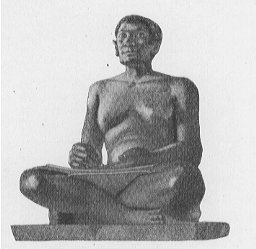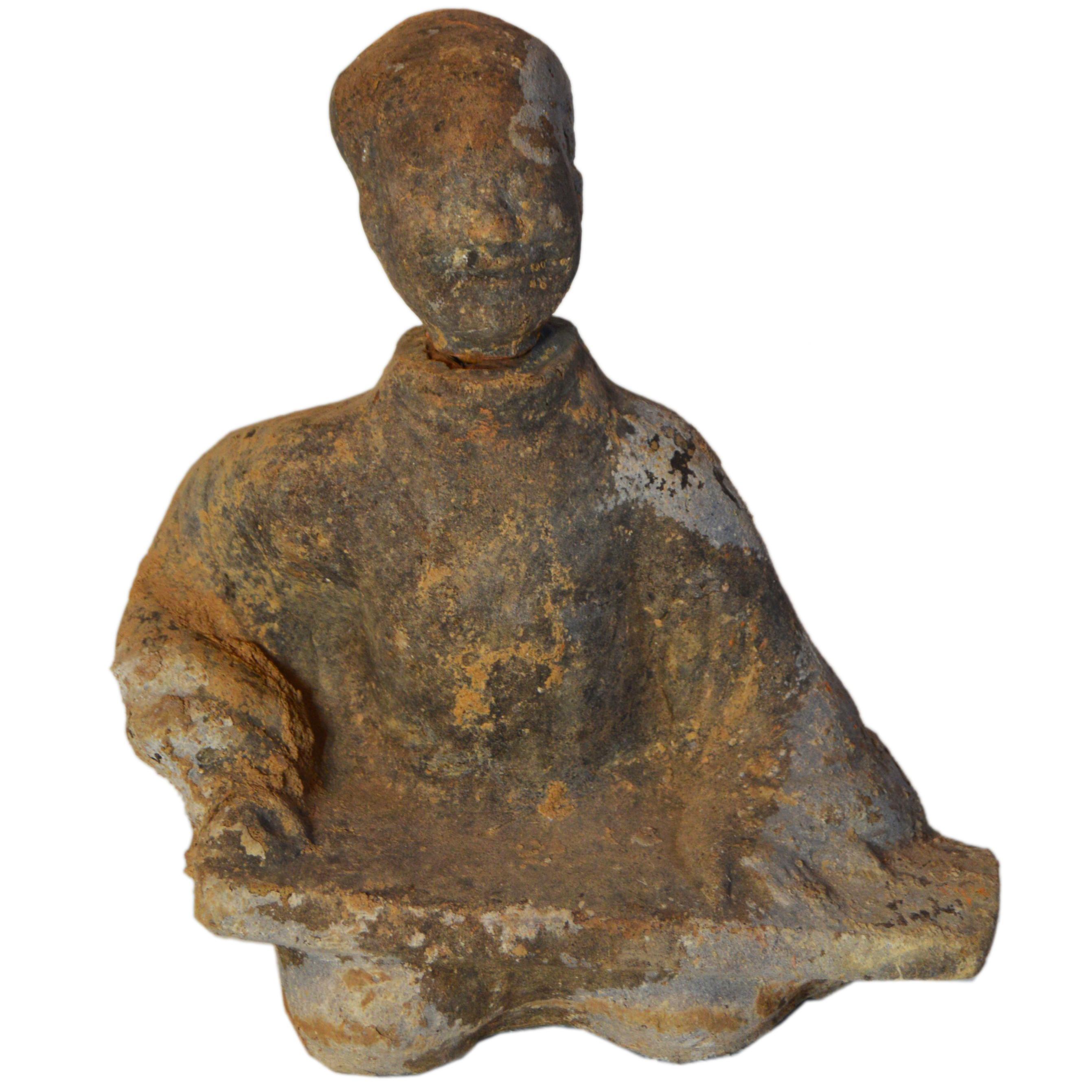

This pose illustrates Khafre's close relationship with his fellow god. The falcon god, Horus (refer back to the Palette of Narmer ) is sitting on the back of Khafre's throne with his wings protectively around the king's neck.He is sitting on the throne of Egypt which is decorated with powerful looking lions and intertwined lotus and papyrus plants, symbols of a unified Egypt.He is wearing the royal artificial beard (even the female pharaoh Hatshepsut is shown in her portraits wearing a beard).His royal linen headdress (similar to the one worn by the Sphinx ).The overall effect is of profound dignity. This is a convention that most pharaohs followed in their royal images with the most notable exception being the "heretic king" Akhenaton in the New Kingdom. He is eternal and as such he is depicted with an athletic physique in the prime of life regardless of his actual age at the time of the statue's carving. Here we see Khafre as a god-king-ruler of his subjects not just in the present but in the afterlife as well. The material of this statue, which is approximately life-size, is diorite, an extremely hard stone and chosen for its sense of permanence-the permanence of kingship. The sculpture is now currently in the Louvre Museum in ParisThe seated scribe. Tiny timeline: ancient Egypt and Mesopotamia in a global context, 2nd–1st millennia B.C.E.Khafre, of the Old Kingdom's Dynasty IV, is best known for his pyramid (one of the three Great Pyramids of Gizeh) and the Sphinx which bears his likeness. The seated scribe.It was first discovered in in Saqqara on November 19, 1850. Dimensions, height: 53.7 cm (21.1 in) Edit this at Wikidata width: 44 cm (17.3 in) Edit this at Wikidata thickness: 35 cm (13.7 in) Edit this at Wikidata.Tiny timeline: ancient Egypt and Mesopotamia in a global context, 5th–3rd millennia B.C.E.Elena FitzPatrick Sifford on casta paintings Reframing Art History, a new kind of textbook However, the true context and use of the statue cannot truly be understood - the exact location of the discovery of this statue, found in 1850 by Auguste Mariette, is unknown, the original context in which the statue was placed has long been destroyed, and the true identity of the Louvre Seated Scribe is still a mystery.Not your grandfather’s art history: a BIPOC Reader.

My God, he seems to be alive the head of the Egyptian Antiquities Service. It was discovered under mysterious circumstances by Auguste Mariette in 1850. This small, realistic limestone statue is over 4,000 years old and depicts an Egyptian scribe about to write on a sheet of papyrus. It is a painted limestone statue with the eyes inlaid with rock crystal, magnesite, copper-arsenic alloy, and nipples made of wood. The Seated Egyptian Scribe from the Louvre Museum. This sculpture of the Seated Scribe represents a figure of an Egyptian scribe at work over 4,000 years ago. With 503 contributors from 201 colleges, universities, museums, and researchĬenters, Smarthistory is the most-visited art history resource in the world. Ancient Egyptian Sculpture of Seated Scribe. We believe that the brilliant histories of art belong to everyone, no matter their background. At Smarthistory, the Center for Public Art History, we believe art has the power to transform lives and to build understanding across cultures.


 0 kommentar(er)
0 kommentar(er)
